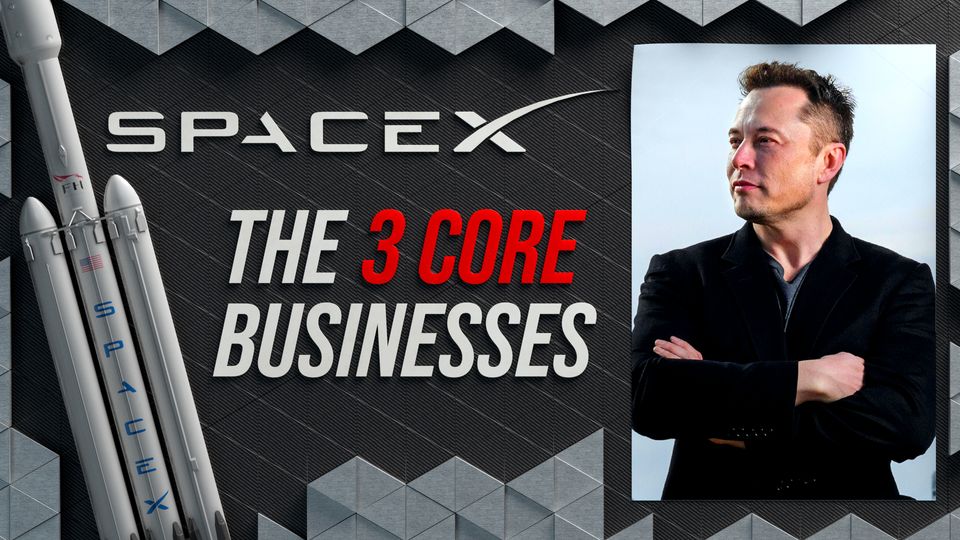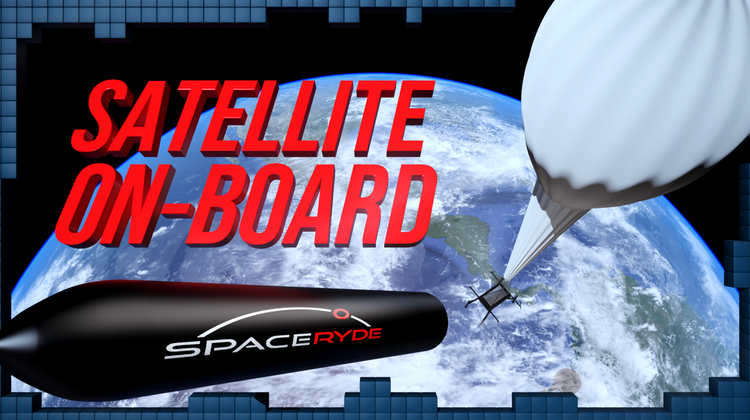How Much Money Does SpaceX Make?

You can enjoy this post as a YouTube video here: https://youtu.be/4OZKUJVunk0
SpaceX had a great 2020. They delivered astronauts to the ISS, began rolling out their satellite internet service, and successfully flew a Starship prototype. But just one year earlier, things weren’t looking so good. The number of SpaceX launches had dropped from 21 to just 13 and the problem was obvious: there just weren’t enough customers.
Even though Elon had delivered on his promise of affordable and reusable rockets, commercial satellite companies weren’t moving fast enough to keep up. None of that mattered though, because Elon is great at thinking ahead and had already set a plan in motion to fill the slack capacity.
Obviously, I’m talking about Starlink here, but that’s not the only way that SpaceX is making money, they actually have 3 distinct sources of revenue with completely unique business models, so let’s dive in and figure out exactly how much each business makes.
The first SpaceX business is extremely straightforward: people pay SpaceX to launch stuff into space for them. Sometimes they are launching satellites for private companies, other times they are delivering supplies to the ISS for NASA. But conceptually, the model is simple: they build a rocket and then someone pays them to send it into space with their payload on top.
Now, these launches get a ton of attention, after all, they are extremely fun to watch. But the market for rocket launches is actually pretty small at only $8 billion dollars globally, and I can think of a few countries that definitely won’t be buying SpaceX rockets anytime soon.
So SpaceX will basically never be able to capture the entire global launch market, but the company is valued at $74 billion dollars, so something interesting must be going on.
Well, there are a few important factors that are unique to the space industry. First, it’s growing incredibly fast. Even though the market is only $8 billion right now, analysts estimate that the market will be nearly 5 times that in 2030. There aren’t really any other industries growing that quickly and SpaceX is in the perfect position to ride that growth to market dominance.
Honestly, SpaceX already has a dominant position as it is. In 2018, they pulled in an estimated $2 billion dollars in revenue. Which was more than all of their direct competitors, although the United Launch Authority was pretty close that year.
The dynamics of the launch market are changing quickly, and this is what’s driving SpaceX’s continued growth. There are four key categories to consider when looking at rocket launches: small, medium, heavy, and super heavy. Small covers anything under 1.5 metric tons, medium is under 8.5 tons, heavy is under 30 tons and anything over 30 tons is considered super heavy.
In 2020, the market for super heavy launches was zero because the capability just didn’t exist yet. But SpaceX’s new Big Falcon Rocket and Starship will finally make this a possibility. And this is a huge opportunity. The super heavy launch market is expected to be over $13 billion dollars by 2030, which is almost twice what the entire launch market is today, and SpaceX will clearly be the major player in that category.
See, when it comes to valuing technology companies, market size is incredibly important. The car market is $80 billion dollars in the US alone, and is in the trillions globally. That’s absolutely massive and a huge reason why Tesla is so valuable. If everyone starts buying Teslas, the company is going to make a fortune.
There’s a twist here though. Although the car market is absolutely massive, it isn’t really growing. In fact, in some parts of the world, people are buying less cars on average than they used to. This makes sense though because technology has made it easier to get by without a car. Apps like Uber and Lyft made ridesharing a viable alternative to owning a car in many situations, especially in crowded cities with expensive parking.
And there is still a huge unanswered question as to how self-driving cars will affect purchasing behavior. It’s clearly not going to happen this year, but it’s totally possible that self-driving cars will eventually be available, on demand, at such a scale that owning a car makes less and less sense.
So, while the car market might actually shrink over the next few decades, the opposite is true for space. Last week, I detailed out Varda is going to start manufacturing high value items like human organs and fiber optic cable in space and if they are successful, Varda is going to need a lot of rockets to scale that business.
Right now, SpaceX’s customers are mostly commercial satellite companies and government research organizations. They’ve provided enough business for SpaceX to make a few billion in revenue from rocket launches, but if an entirely new industry starts taking advantage of space in a completely different way, the demand for launches could explode.
But while betting on an entirely new industry like space manufacturing is exciting. Elon has a massive company to run and doesn’t have time to waste. We all know how aggressive he is on timelines after all.
Current estimates put SpaceX’s launch business at around $3 billion dollars. It’s growing steadily, and is certainly an impressive accomplishment. But now, let’s look at the revenue projections for SpaceX’s second line of business: StarLink.
These are some pretty insane growth targets and I’d totally understand if you thought this data was just a joke that Elon tweeted, but it’s actually from Morgan Stanley analysts. So let’s talk through how Starlink makes money and why SpaceX is expecting it to be such a huge area of growth.
The core business model for Starlink is quite simple, even if the technology is extremely complex. SpaceX basically just charges customers a monthly subscription fee like any other internet service provider. Currently, customers do have to pay a $500 one-time fee for the equipment, but after they’re live, service is just $99 per month.
Early reviews have been pretty good too, with plenty of customers reporting reliable speeds in rural parts of the country where they had no chance of getting internet service before. As of August 2021, Starlink has 90 thousand subscribers, and that number is growing over 20% per month.
That growth figure is extremely promising. 20% monthly growth is enough to 10x the business every year if you can keep it up, and Starlink is showing no signs of slowing down. They already have 700 thousand people signed up on a waitlist in the US alone. If SpaceX can convert all of those people to paying customers, they will be just shy of a billion dollars in revenue. Pretty incredible stuff.
Part of what’s holding back the rollout currently is that SpaceX needs to launch more Starlink satellites and fast. They currently have a little under 2 thousand satellites in orbit, but they have approval to launch nearly 12 thousand satellites, the only issue is actually getting them up there.
That’s where Starship comes in.
Part of why Elon Musk has been so successful throughout his career is that he thinks in decades, not years. He’s always looking for ways to build synergies between the different projects he’s working on.
The first great example of this was his “secret plan” for Tesla, which he published on the Tesla blog back in 2006. In the post, Elon outlined how he planned to take on the entire car market by first selling an expensive roadster that would compete with Porsche and Ferrari.
Then use the money from the roadster initiative to build a sporty four door family car at half the price. That became the Model S that launched in 2012. Finally, Elon said that once the Model S was selling well, he would introduce a third model that would be even more affordable. Clearly he was talking about the Model 3, which hit roads in 2017.
Elon is doing something similar at SpaceX right now. His two top priorities are Starship and Starlink and they have been described as “two Manhattan projects running in parallel”. The scale of the engineering effort is massive, but because they feed off of each other, they are more likely to be successful.
See, Starlink would be extremely costly to roll out using only Falcon 9 rockets. This is because a Falcon 9 can only fit 60 starlink satellites on board during a single mission.
At this rate, it would take 200 launches to get the full Starlink network up and running, but Starship can take 400 satellites on a single trip. With just 30 launches, SpaceX could have a massive network of 12,000 Starlink satellites in orbit, and they’re launching about 30 rockets per year already.
So Starlink clearly benefits from Starship’s incredible payload capacity, but that doesn’t explain how Starship benefits from Starlink's satellite internet. The answer comes back to that original problem Elon ran into back in 2019.
The lack of demand for rocket launches was really hurting SpaceX’s ability to plan long term and that was unacceptable. Every SpaceX rocket takes years of research and development to bring to reality. And no one, not even Elon Musk, can justify spending billions of dollars and years of time building rockets that no one is going to use.
But Starlink solves the demand side of the equation. Now, whenever SpaceX has a rocket ready to go, but no one to purchase it, they can just launch more Starlink satellites. And the revenues from Starlink will allow Elon to pour more money into future rocket development. It doesn’t stop there though.
Investors clearly understand how massive the Starlink opportunity is. Remember how the market for launching rockets is only $8 billion dollars? Well the market for global broadband internet is $1 trillion dollars, that’s trillion, with a T.
Now, obviously SpaceX isn’t going to capture that entire market. People will still be using terrestrial networks in most situations, especially in cities.
But it’s not unreasonable to think that Starlink could capture 3% of the market and wind up generating $30 billion per year in revenue. That’s an irresistible opportunity for investors, and it’s allowed SpaceX to raise billions of dollars to fund additional expansion.
Currently, I’d estimate that SpaceX is making about $1 million dollars a year from Starlink, which is a rounding error compared to their multi-billion dollar launch business, but remember: Big things have small beginnings.
Lots of people credit Elon’s success to his engineering knowledge, and that’s certainly important, but I think it’s his ability to think long term that’s actually the main driver of his success.
He doesn’t mind being doubted or mocked, in fact, he clearly thrives on it. And no project has been the subject of more skepticism than point-to-point, which is SpaceX’s third line of business, although it’s not live yet.
The promise of SpaceX point-to-point travel is pretty incredible. Elon wants to get you from New York to Tokyo in under 30 minutes, and I totally understand why people find this so far-fetched, but let’s walk through the potential problems and then figure out exactly how much money SpaceX could make from this business if it works.
The first issue that comes up whenever people discuss traveling around the world on a rocket is always safety. I’ve seen plenty of comments on my previous videos about how astronauts go through years of training and have to be in peak physical condition in order to undergo space travel.
Astronauts are clearly incredible people, so no shade to them, but I don’t think the actual liftoff is the hardest part of their job. Blue Origin was able to take an 18 year old and an 82 year old on the same trip to space without any issues.
Sure, you might need to do some training or get a certification in order to safely ride on a SpaceX rocket, but people already jump through plenty of red tape just to get TSA precheck or Global Entry, so I don’t think it’s going to be too hard to get people to sign up for SpaceX training sessions. Even if they have to sit in a centrifuge until they throw up.
The second issue with point-to-point is logistics. It’s not uncommon to spend all day traveling, even when your flight is only a few hours long. The ride to the airport, the traffic, the transfers, and security all start to add up, and pretty quickly you’ve spent 8 hours traveling just to get from LA to San Francisco.
If SpaceX has to land their rockets hours outside of major city centers, just getting to and from the space port could eat away at any time savings from the rocket ride.
This is a great point, but remember, we’re thinking about this project in the context of decades, not years, so it’s not crazy to imagine the necessary support infrastructure to become a reality while SpaceX is working on point-to-point.
Things like autonomous drone ships, self-driving cars, underground tunnels, and even hyperloop trains could all start to become a reality around the same time as point-to-point, which would make everything a lot faster.
The third problem everyone cites with point to point is cost, and this is the most important factor in understanding exactly how much money SpaceX could make here.
People say “Surely it can’t be economical to get on a rocket every time you want to go somewhere” and that’s definitely true right now. The average cost of a long-haul flight is about $2,500 dollars and experts think that SpaceX won’t be able to break even unless they are charging at least $12 thousand dollars, per person.
The key here comes back to market size again. There are already 150 million people who take flights longer than 10 hours. These long-haul flights generate a lot of money. Over $400 billion dollars annually.
If SpaceX can get just 5% of the market to switch over to point-to-point, they will be generating $20 billion dollars per year. Airlines routinely sell more than 5% of customers on first-class seats, and those don’t get you there any faster.
A massive market like that is a huge incentive to get this working and if it doesn’t break the laws of physics, Elon will try and figure it out.
There is one other potential problem with SpaceX’s point-to-point strategy and that’s competition from faster commercial airlines.
Since the concord was decommissioned in 2003, traveling faster than the speed of sound has been impossible for civilian travelers.
But a startup named Boom has been developing supersonic jets that can travel at Mach 2.2. This could make the high-speed travel market much more competitive, but that’s a story for another time.




